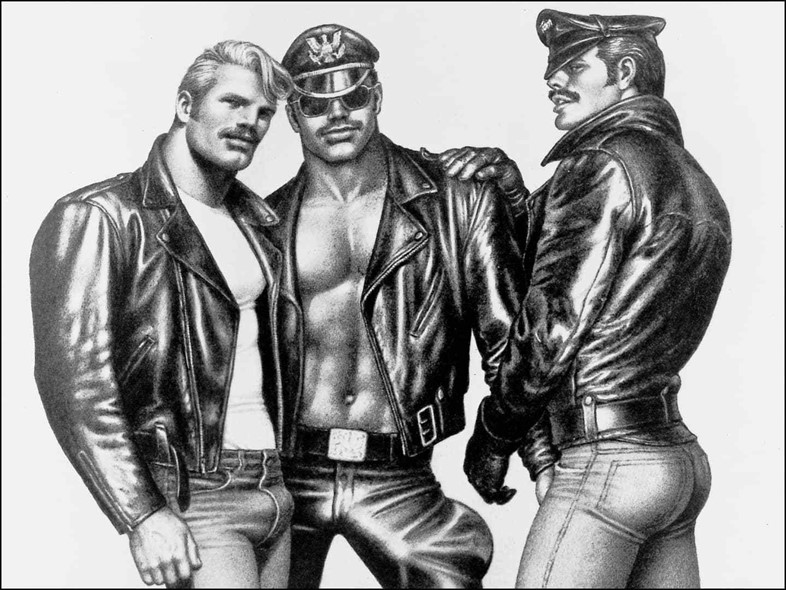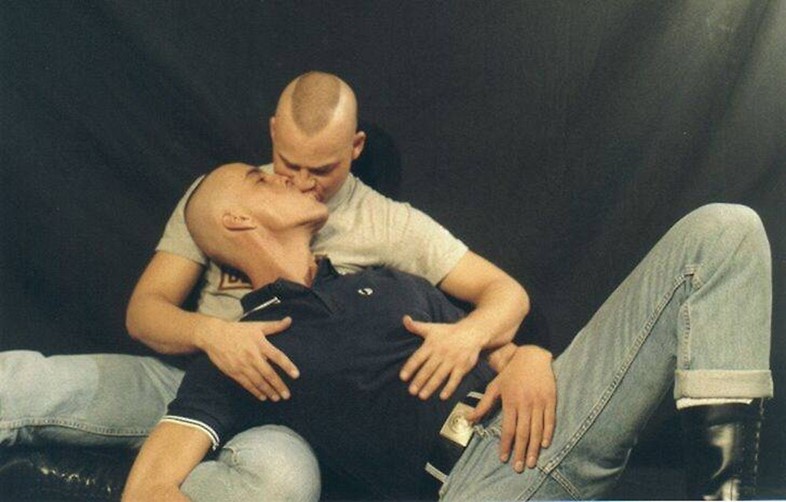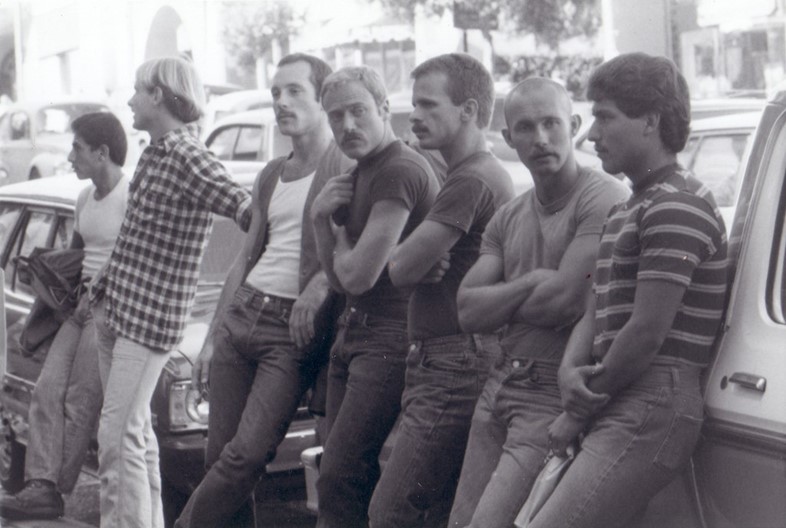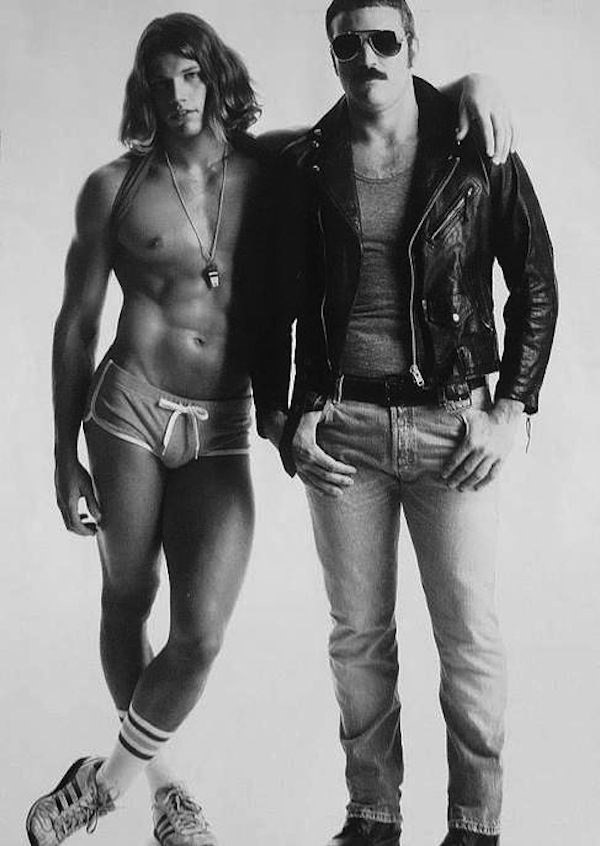From physique culture, through to Tom of Finland and Grindr – gay male culture always been rigid when it comes to policing body types and enforcing outdated ideas of masculinity
It only takes a scroll through Grindr to see that a select few body types reign supreme when it comes to gay men: from oiled, glistening torsos to slim, hairless bodies, it seems our definitions of ‘beauty’ are fairly rigid within our so called ‘community’. Ideals may have changed and expanded over the last few decades, but ultimately little has shifted – and research shows that it’s having a real effect on both our mental and our physical health.
Crucially, there’s historical context to these standards. Our desire for muscularity can be traced back to the heyday of ‘physique culture’, which blossomed in the 1950s and 1960s when censors cracked down on gay porn. With no X-rated mags to be found, gay men in search of bare flesh turned to bodybuilding magazines, some of which – most notably Physique Pictorial and Beefcake – became gay media staples in their own right, transforming everyday muscle men into objects of desire.
This fixation with physique only grew over time. Artists like David Hockney preserved the essence of physique culture through homoerotic paintings; Tom of Finland ramped up the aesthetic exponentially, creating explicit artwork featuring giant-dicked policemen fucking on the streets. His aim? To queer the notion that gay men were inherently feminine, something that was – and still is – weaponised against us.
Finland’s subversion of hyper-masculinity cemented a radical legacy which lives on today not just in museums and books, but also in gay porn scenes featuring similarly Adonis-like men. The ‘jock’ isn’t the only archetype of gay male desire but it’s one of very few, and this narrow scope of gay beauty is doing us damage. An often-cited 2007 survey found 42% of all men with eating disorders in the UK were gay despite us making up around 5% of the male population, whereas LGBTQ+ people of all genders were more likely to binge and abuse laxatives – which arguably ties into our increased rates of mental illness.

It’s not just body image, either; 2016’s #GayMediaSoWhite hashtag illustrated a huge lack of diversity in gay media which seemed to explain the racism, femme-shaming and body-shaming so prevalent on LGBTQ+ dating apps.
Gay and Lesbian Studies professor Gregory Woods agrees that there’s a fetishisation of hyper-masculine bodies in the gay community, but says he’s unsure that it can be linked back to physique culture. “I guess it’s still, in part, a reaction against negative stereotypes of campness, which seem especially common in the context of school bullying,” he theorises. “We go to the gym and turn ourselves into the tattooed hulks (or hunks?) our bullies wouldn’t have dared to bully.”
It makes sense that we could be running from stereotypes by bulking up our bodies, or even by appropriating masculine aesthetics like the handlebar moustache or the skinhead (both famously popular amoung gay men in the 70s and 80s). But plenty of men project this pressure to ‘man up’ and expect it of potential partners. They plaster their dating bios with demands like ‘don’t be camp’ or ‘be a man!’ and, in turn, insinuate that campness is bad. But this is untrue; not only is camp a political weapon, it’s way of being that was openly embraced by plenty of the pioneers that fought most vigorously for the rights LGBTQ+ folk we enjoy today.
We live in a misogynistic world which stigmatises and regulates femininity, and this reality is stamped all over gay beauty standards. I know this through my own experiences of curating dating profiles: I’ve learned to delete the photos of me in a full face of glitter and hide pictures of my body at its heaviest. I once heard a friend say that fat gay men are “outcasts”, and it made me cringe – it sounded like the kind of passé Sex and the City quote designed to have Woke Charlotte foaming at the mouth. But over time it’s come to feel upsettingly accurate; even a BBC3 documentary dedicated to gay body image featured the experiences of precisely no fat gay men. This erasure only strengthened the feelings already whirling through my mind: that we’re anomalous or, worse, unwanted.

In terms of what is desirable, it’s helpful to look into gay apps and their language of ‘tribes’. These are the narrow boxes that delineate the boundaries of our desires: there’s the ‘twink’, young, hairless and recently celebrated by The New York Times in a controversial, largely tone deaf op-ed (Gay Twitter collectively pointed that it’s literally always been the ‘age of the twink’ in our community); then there’s the ‘bear’ and the ‘cub’, both categories which insinuate it’s okay to be plus-size if you also happen to be hairy.
The aforementioned ‘jock’ is still arguably the most popular category, but the options for anyone that doesn’t fit these boxes are limited. The porn industry is exemplary of these limitations: people of colour might get fetishised by problematic porn labels like ‘Ebony’ and ‘Asian’, whereas trans men remain largely invisible in porn (although studios like Pink & White and stars like Buck Angel rally against this). For context, porn is the one category in which trans women have been historically over-represented in equally problematic ways – the online category ‘Shemale’ is proof of this.
Arguably, none of these subcategories are as culturally dominant as the palatable white gay norm, established when advertisers earmarked gay men and lesbians as a lucrative market as early as thirty years ago. Sitcoms like Will & Grace centred ‘aspirational’ white, middle-class men, whereas Queer Eye – the original, not the heartwrenching remake – positioned us as fairy godmothers willing to makeover hapless straight blokes in return for superficial acceptance. Corporations engaged in ‘pinkwashing’ – offering us the bare minimum and rinsing us for cash in return. In the same way that companies play on the insecurities of women to flog them diet pills, our beauty standards were narrowed so that we’d spend to keep up appearances.
Woods describes these standards as a “taxation”. “Being compelled to look good – perfect body, perfect haircut, perfect taste in clothes – is a kind of cultural taxation like the pink pound itself, which lots of us seem cravenly willing to pay in exchange for straight people’s acceptance.” In fact, if we follow the Queer Eye logic that straight men overwhelmingly accept us when they want to look more like us, we’re actually forced to overcompensate.

It’s also worth highlighting that the focus on health wasn’t just driven by a desire to sell us gym memberships and supplements. In the context of the AIDS epidemic, it was also politically-charged. The illness and its homophobic coverage still loomed large over mainstream media, and I’ve talked to men in the past that feel it shaped beauty standards – that there was a pressure to look physically fit and healthy as opposed to skinny and frail in order to attract partners. Some even say that hairlessness was particularly desirable, a way to display a body free of lesions. These are oral histories, but they’re valid - especially given the generation of voices and testimonies the epidemic took from us.
Issues around gay male masculinity and femininity have gone underexplored, but the pressure to fit into rigid beauty standards is collectively punishing us. I remember being scarred when I was jokingly told that fat and feminine gay men were particularly marginalised, and for years I internalised the idea that I could be too fat or too queer to be desirable. I policed my masculinity and abused my body, drowning it with alcohol and using food limitation tactics to shape it into something more conventionally attractive.
Unfortunately, research indicates that too many of us are still doing the same. But gay beauty standards become easier to disentangle when you realise that they’re rigid for a reason: because they’re largely a byproduct of capitalism, discrimination and internalised homophobia. We’ve been packaged and sold as fairy godmothers, pretty boys and muscle men, but there needs to be room for those of us who don’t fit those stereotypes. We all walk through life differently, but ultimately we can be a community; the more we dismantle and disrupt archetypes of gay beauty, the more we can strengthen the ties that bond us.




